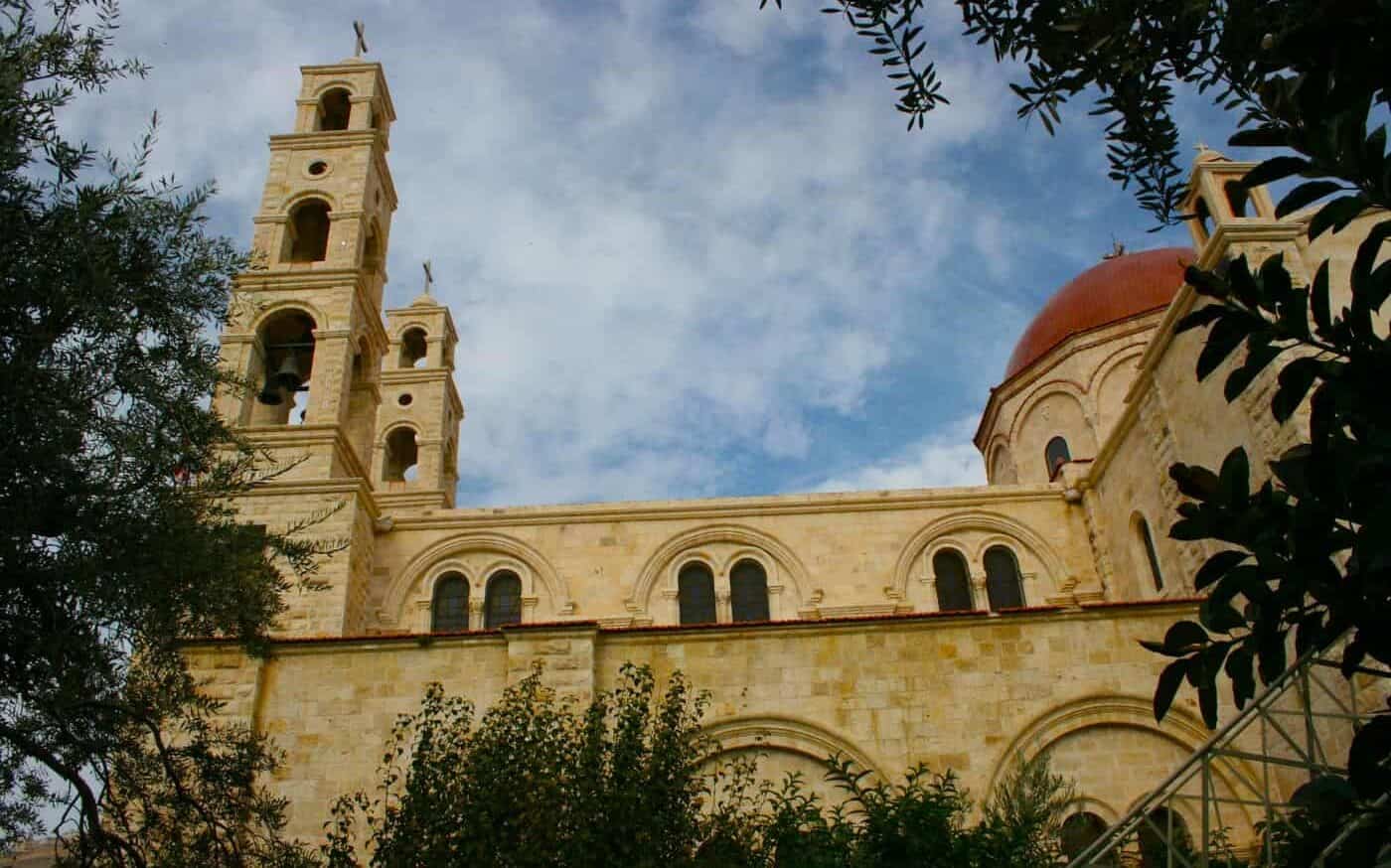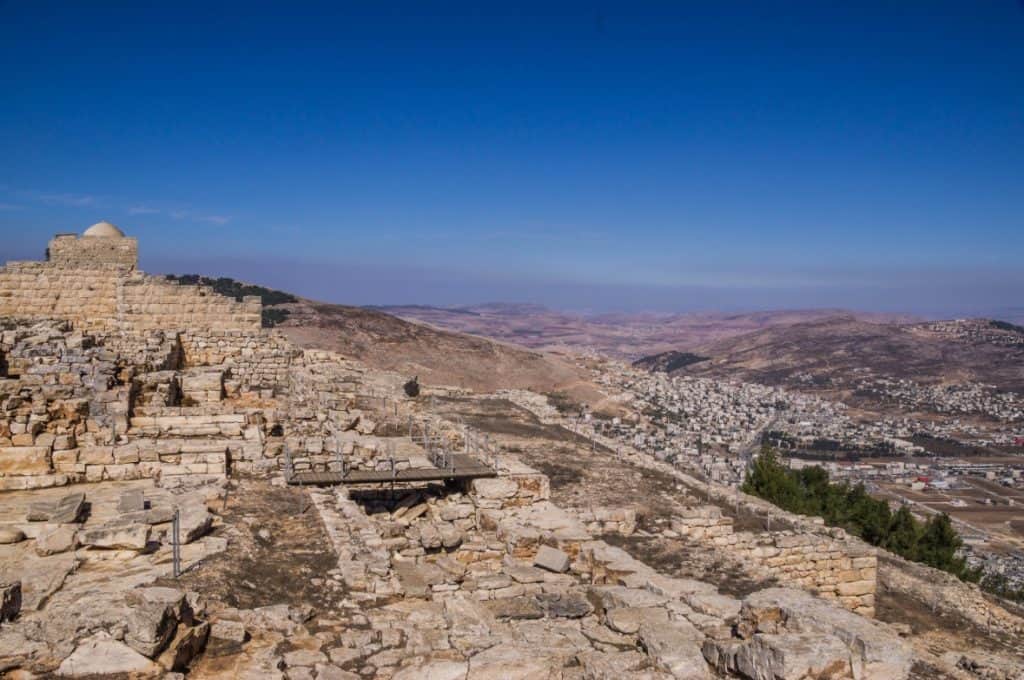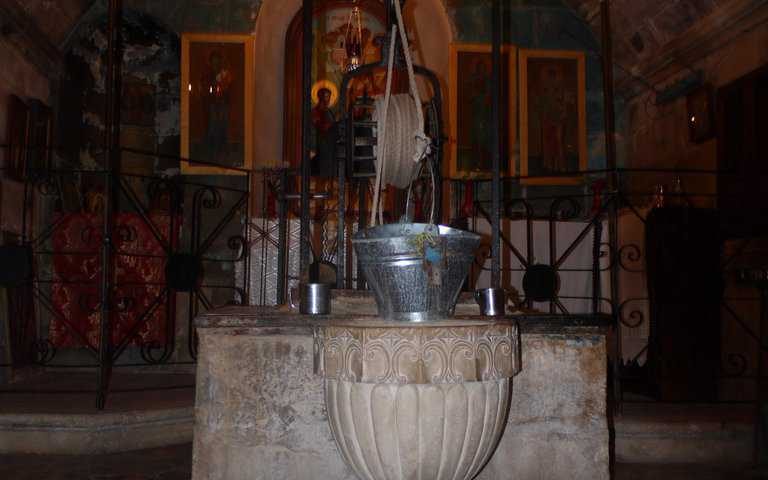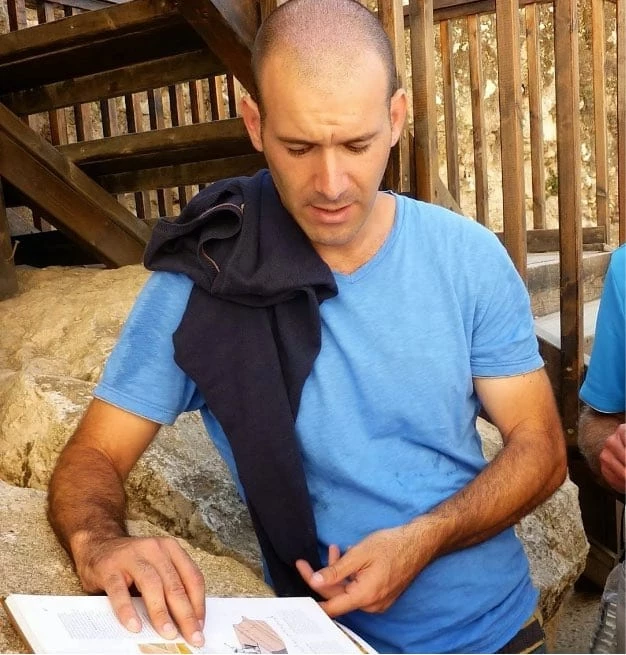One would not think that a simple well could garner so much attention worldwide, but this one does. Jacob’s Well is located between Mount Gerizim and Mount Ebal in the West Bank. You must first enter the Church St. Photina on the monastery grounds to reach it.
The church is worth the trip alone for its charming beauty and grace. Once you have entered the church, you must descend the stairs into the crypt. It is a simple, small well with a pulley system and pail. “Why is this well so important,” do you ask? Jacob’s Well holds religious significance to Christian, Muslim, Jewish, and Samarian people.

Credit: Tiamat, CC BY-SA 3.0, via Wikimedia Commons
The Biblical Context of Jacob’s Well
Genesis states that Jacob had camped before the city and bought the land on which he pitched his tent to build an altar. Soon after, Jacob made a well to address his family’s and his flock’s needs. Later, it was written in the New Testament that this is where Jesus met the Samaritan woman. Jesus had been on a mission to meet this woman and to tell her of the gift of god.
Let's Tour Mt. Gerizim

He said he had great thirst; the thirst was not for actual water but for what the water represented. The water represented Jesus’s gift from within, the gift of faith, salvation, and eternal life. He wanted to give the woman meaning in her life with a deep faith that she could hold within her heart.
Good Samaritan Museum

Credit: Jeremiah K Garrett, CC BY-SA 3.0, via Wikimedia Commons
The churches built over Jacob’s Well have faced great strife for thousands of years. It is believed that the church built over Jacob’s Well around 330 CE was likely used for Christian baptisms. It is assumed that the church was probably destroyed during the Samaritan revolts and rebuilt by Justinian as a Byzantine-era church in the 720s.
However, when the Crusaders arrived, it was in ruins again, to be rebuilt again in the 12th century, only to be destroyed not long after. Built again in 1860 by the Greek Orthodox, an earthquake was the cause of its destruction in 1927. Thankfully, it was restored a while later, and visitors can enjoy its beauty and Jacob’s Well underneath again. Many pilgrims take comfort in Jesus’s message to the Samaritan woman and visit Jacob’s well sings to their hearts.







